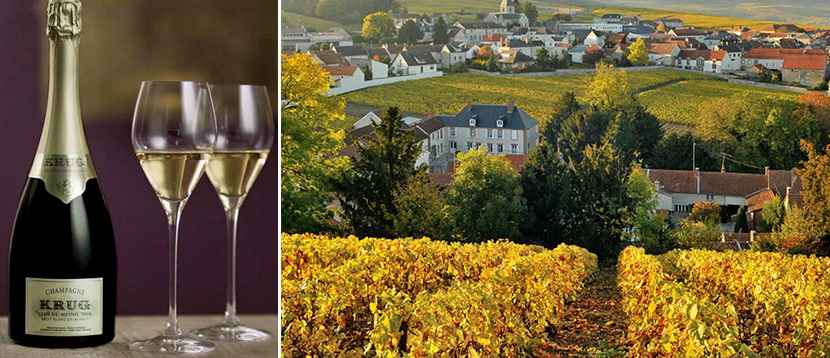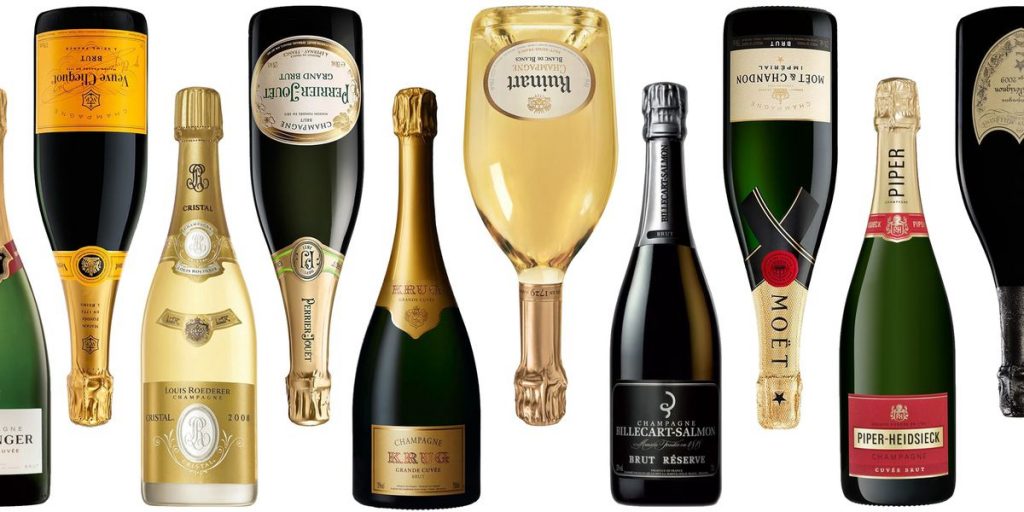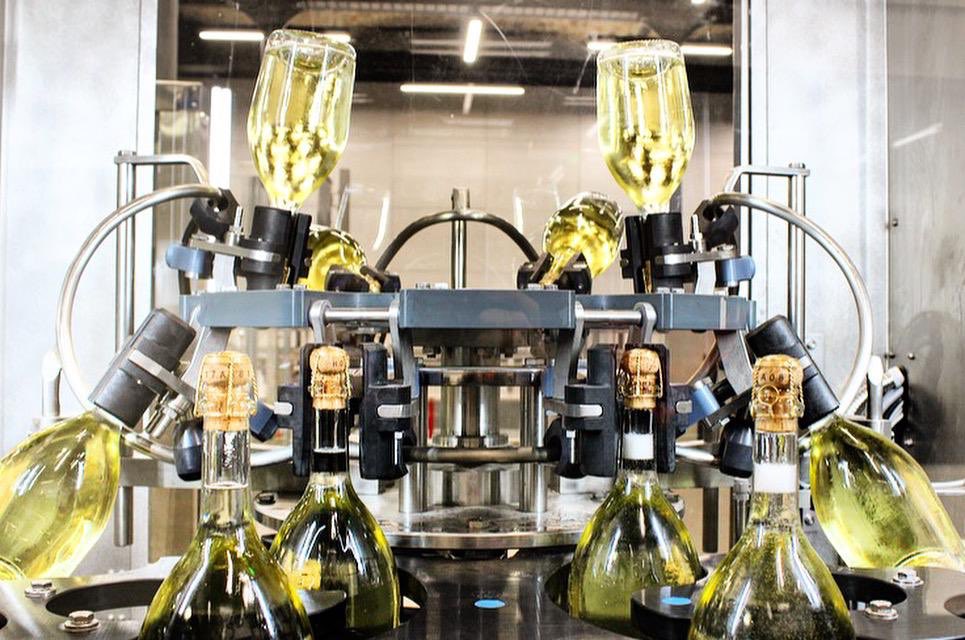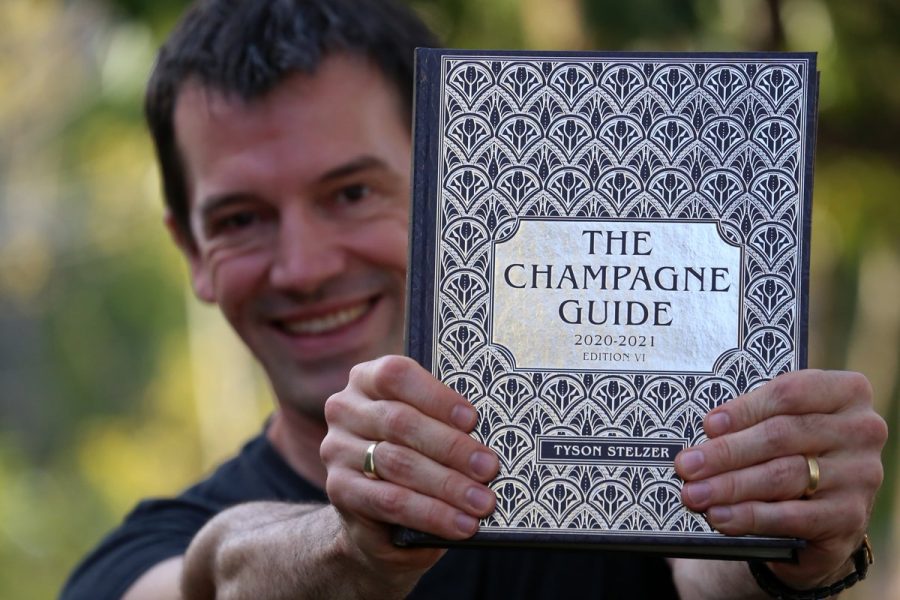It’s a world that’s far away from the humble wines we tend to focus on, but there are special occasions when we buy champagne. On those occasions it’s a great asset to have some knowledge, how and where to find the best value champagne for example. A good friend knows far more about this subject than I do, and this post sums up Jeffrey’s journey into champagne.
Before we get to that, we need to understand that champagne is a very special wine made in a special place, in a very special way. This is not easy given the volumes involved: 300 million bottles a year. That makes maintaining quality and prestige a constant challenge, which most makers have met. In fact champagne is most likely a much better product these days than it was in the fifties.
A World of Change
Back then, champagne was a heavy wine, full of sugar and usually drunk with dessert. The apéritif styles that offered purity, freshness and elegance came much later, when more Chardonnay was used, the (sugar) dosage was reduced and stainless steel replaced much of the barrel storage. Blanc de Blancs and Rosé champagnes followed, along with prestige cuvees such Krug’s Clos de Mesnil
Like other French wine making areas, Champagne has its Grand Crus, and Clos de Mesnil is one of those: a tiny walled plot of hallowed soil. These single site champagnes are the exception though, since champagne making is really about blending many different wines to the ‘house style’ most makers have refined over the years.
A bottle of Krug’s Clos de Mesnil Blanc de Blancs comes with a 4 digit price tag. At the other end of the scale, a bottle of Moet will set you back just $50. I suspect it’s a bestseller because people can pronounce its name with ease, but it’s consistently the worst big name champagne I’ve tasted. This is where a little knowledge makes a big difference, because you can get far better champagne for a few dollars more.
For the non-vintage wines, the vast majority of champagnes made, makers use base wines from different areas and different years. The next level up is vintage champagne, only made in top years as is the custom with Vintage Port. Beyond vintage wines, we get into special cuvées.
There are a dozen or more big houses in Champagne, many of them centuries old, and there are small makers and even co-ops. To find your way around these involves a long and winding road as well as deep pockets, so let’s turn to Jeffrey for some inside knowledge.
A 5-Year Project
Jeffrey is a serious wine man and a very generous friend, not just with wine but with his time as well. He knows his way around champagne better than anyone I know, so I asked him for his advice on the best houses and vintages, and eventually he came back with an email that provides a great mini guide to the region and its wines.
Jeffrey claims he really only ‘discovered’ champagne about 5 years ago. He adds that ‘I had been hiding under my ignorance, I suppose it’s reasonable to say, of limited knowledge beforehand through unadventurous drinking of a very narrow band of favourite champagne houses. And what I have belatedly discovered is just how huge and complex, how diverse and deep the whole of champagne really is.’ I’ll get out of your way now and let Jeffrey tell the story.
Modern champagne – powerhouse of production
Nothing and no other place in the world of bubbles comes near it for its overall quality or volume of production. However, there are some individual makers around the world that warrant their time in the sun … Eg, Arras, in Australia.
I’m comfortable with what I may claim to be a good ‘working knowledge’ of the greater Bordeaux region, of a more focused knowledge of the Côte d’Or, Chablis, the Rhone, and various regions of French ‘country’ wines …. without the notion to any expertise (of course) as befits an amateur at it all. But as I have discovered, Champagne is the granddaddy of them all as far as the hugeness in scales of production, of obvious quality improvements over the past 25 years, and the vastness of area in production.
Champagne as a whole is a modern multi powerhouse of production – in many large ‘Houses’ even industrial size scales of production – all tend to operate at a level of quality that is beyond most amateur drinker’s comprehension.
My last 5 years have been a concerted effort to get to know champagne really well, in order to form the same level of ‘working knowledge’ as I have of the other [French] regions. To do this I’ve invested heavily in looking at about 80 Houses, from bottom to top, and now I feel I have just the basics of knowledge – I’m still the amateur.
The Industrial Face of Champagne
There is an ocean of fairly ordinary ‘industrial’ quality champagne produced, and this is what most people think is good Champagne. These are some of the best-known:
- Moët white label Brut Impérial (up to 30 million bottles annually)
- Veuve Clicquot Yellow Label (X millions too)
- Perrier Jouët
- Laurent-Perrier (white label La Cuvée @ 5 million bottles)
- Mumm
- Nicolas Feuillatte
- Piper-Heidsieck
- Pommery
- Lanson
These are rather an ordinary level compared to what is capable of being produced through the tremendous leaps forward in the quality of champagne today. Each one of these Houses is capable of producing the finest examples of champagne at their upper echelon of enterprise – think Moët Brut Imperial vs Dom Perignon (the 08 Dom P is pure heaven in a bottle), and these other Houses have, or try, for the equivalent.
In certain great years, these House’s vintage champagnes can be pretty good, e.g. Laurent-Perrier made a stylish vintage 08 which they left on extended Lees for 10 years as it was such a good vintage (it came out @$90-120), but normally their vintage is just marginally better than their White Label La Cuvée.
Simple Rules to Follow
Rule number 1 : know the vintage – the weather / vintage conditions really impact on quality here.
Rule number 2 : know the House – House styles have their particular character, and thus have a personal appeal, and this can be a fairly dependable guide through their grades of quality – Think Pol Roger.
Rule number 3 : every House is ‘different’, different in House style, the winemaker’s philosophy, the viticulture practices, the land holdings or grape sources / axccess, and financial constraints.
Rule number 4 : prestigious-end Cuvees – this is where all Houses show their winemaking signatures, and where the excitement is. Yes, these are always expensive.
The best Line & Length Houses
What are the Great* Champagne Houses where the line & length of winemaking is outstanding at every level. This is not on the basis of size, but purely on quality at every level, and on value for money.
- Billecart-Salmon
- Bollinger
- Charles Heidsieck
- Deutz (owned by Roederer)
- Dom Perignon is part of Moët, but recently separated as a producer brand – and should be listed here.
- Jacquesson
- Krug
- Philipponnat
- Louis Roederer
- Pol Roger
- Ruinart
- Taittinger (a large production, family-owned House, but white label style can reflect the vintage).
Recommended champagne @$70 level
My choice of best value-for-money, entry-level quality
*star rating
**Billecart-Salmom Brut Reserve
**Pol Roger white label
***Louis Roederer Brut Premier – real craftsmanship here, and currently terrific.
*Bollinger
*Taittinger
All these bottlings (with the exception of Billecart) are capable of and vastly improve with 3-5 years
further ageing.
Recommended Champagne @$120 – $150
***Billecart-Salmon Blanc de Blanc NV
*Charles Heidsieck NV
***Charles Heidsieck Blanc de Blanc NV
**Pol Roger vintage
**Louis Roederer vintage
*Dom Ruinart Blanc de Blanc NV
*Gosset NV
**Taittinger Prelude Grand Cru NV
*Taittinger vintage
Exceptional quality Growers/Owners (and possibly Negotiants)
These are smaller estate Champagne Houses that I have found consistent over time ….
**Agrapart
**Andre Clouet
**De Sousa
***Egly-Ouriet
**Jacquesson
**Jerome Prevost
*Paul Barra
***Philipponnat (although now owned by a large House)
**Pierre Gimonnet
***Pierre Peters
*Ulysee Colin
**Henri Giraud
My favourite vintage, and Tete de Cuvees…
Billecart-Salmon Cuvee Nicolas Francois
Billecart-Salmon vintage Blanc de Blanc
Billecart-Salmon Cuvee Elisabeth Salmon Rosé
Bollinger Grand Année
Charles Heidsieck Blanc de Millénaires
Charles Heidsieck Millésime
Charles Heidsieck Millesime Rosé
Dom Perignon vintage
Dom Perignon Rosé
Krug MV
Krug vintage
Krug MV Rosé
Krug BdB Clos de Mesnil
Laurent-Perrier Grand Siècle NV
Laurent-Perrier vintage Cuvee Alexander Rosé
Louis Roederer vintage Blanc de Blanc
Louis Roederer vintage Rosé
Louis Roederer Cristal
Louis Roederer Cristal Rosé
Philipponnat Clos de Goisses
Pol Roger vintage Blanc de Blanc
Pol Roger vintage Rosé
Pol Roger vintage
Pol Roger vintage Cuvee Winston Churchill
Dom Ruinart vintage Bland de Blanc
Dom Ruinart vintage Rosé
Taittinger Comte de Champagne BdB vintage
Taittinger Comte d Champagne Rosé
————————————————–
Additional Resources
The Champagne Guide 2020-2021 by Tyson Stelzer – Jeffrey says: ‘I recommend this issues without equivocation as it’s a great source of information on both Champagne as a whole, and on individual Houses. You may find reason to critique him in ways not unjustified, as his narrative is a form of prose so well composed I feel, a reader may wonder if its wine he’s reviewing or is he more intent in writing a rich poetic masterpiece for the sake of writing – which is no mean criticism.’
I know exactly what Jeffrey means. I ran into Tyson Stelzer’s wine poetry a few years ago, in piece he wrote about Penfolds Bin and Icon Release 2013, where I accused him of sounding like Penfolds’ PR machine.
Here’s a sample chapter https://www.tysonstelzer.com/wp-content/uploads/2020/06/Champagne-in-the-World-Sample-chapter.pdf
Kim’s Cheat Sheet for champagne jargon https://www.bestwinesunder20.com.au/cheat-sheet-champagne-jargon/
An Easy Guide For Tasting Champagne https://new.glassofbubbly.com/an-easy-guide-for-tasting-champagne/
How champagne is made https://www.youtube.com/watch?v=dVtIIjm4lSQ




